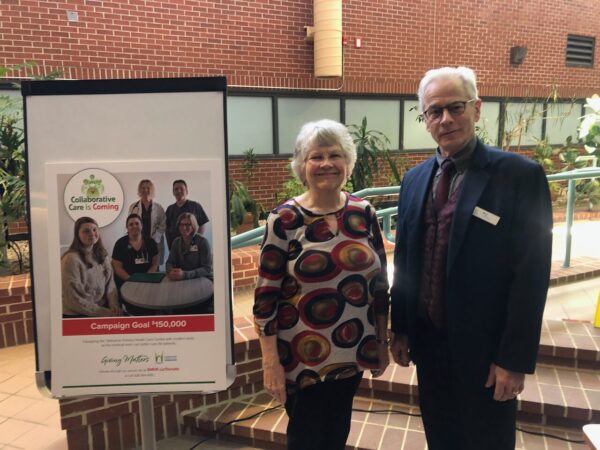
The cans and bottles have been piling up quickly this month at Wheaton’s All-in-One recycling depot in the Sackville industrial park. Since April 1, consumers who return their beverage containers have been getting their full deposit back, doubling the cash payout on a bag of cans and bottles. That means that in the months leading up to the change, people were holding back, waiting for April 1.
CHMA dropped by Wheaton’s to find out how the depot is faring, now that New Brunswick has embraced a full deposit return:
“As you can see, we’re a little backed up right now,” says Wheaton, pointing to piles of bagged cans and bottles inside and outside the depot. “A lot of people were holding off that for the last two, three months. And so then they all, of course, come in at once.”
Wheaton says it took some budgeting to bridge the few months that business dropped off, but at least the return was predictable. “We knew that it would be up again in April,” he says.
So far this month Wheaton says he’s averaging 80,000 to 100,000 cans per week, when before the changes to the system he would see 35,000 to 40,000 cans per week.
Wheaton says it’s still not clear if the full deposit return will make an impact on how many redeemables get returned overall. In 2022, New Brunswick’s redeemed deposits on just 78% of the aluminum cans they bought, and just 68% of the PET bottles.
Encorp, the industry group that the province appointed to run the redemption program, is aiming to increase those percentages ever so slightly in the next five years. According to their stewardship plan finalized in January 2024, Encorp set goals to have 81% of aluminum and 72% of PET containers redeemed by 2028.
Wheaton says it should take a month or two for people to get their stockpiled redeemables returned before it becomes clear whether the doubling of their value will have any affect.
New Container Recycling Fee to be hidden
For consumers, though the new full deposit return system appears to be a net benefit, it turns out that’s not always the case.
Under the old system, the half of the container deposit that didn’t get returned to consumers was used for two things: to cover the handling fees for the containers, and to fund the province’s Environmental Trust Fund, which spends $8 million to $9 million per year on basic environmental programs like watershed monitoring and energy retrofit programs. (Last year, the ETF granted $500,000 to 13 projects directly impacting the Tantramar region.)
The province of New Brunswick has not announced how it will replace the funding for the Environmental Trust Fund, but there is a system in place to cover handling fees: a new per unit Container Recycling Fee which is completely non-refundable.
In some cases, the new recycling fee will actually be higher than the increase in deposit return that consumers get as of April 1. In the case of a glass liquor bottle, where consumers will now get their full 20 cent deposit back (an increase of 10 cents), consumers will now pay a new 11 cent CRF. For non-alcohol aluminum cans, the hidden CRF will be just one cent, while for PET bottles it will be three cents.

And unlike deposits, container recycling fees will not appear on store receipts. In fact, in the agreement struck with the province and Encorp, the new container recycling fee cannot appear on receipts, and must be included in the product price.



















